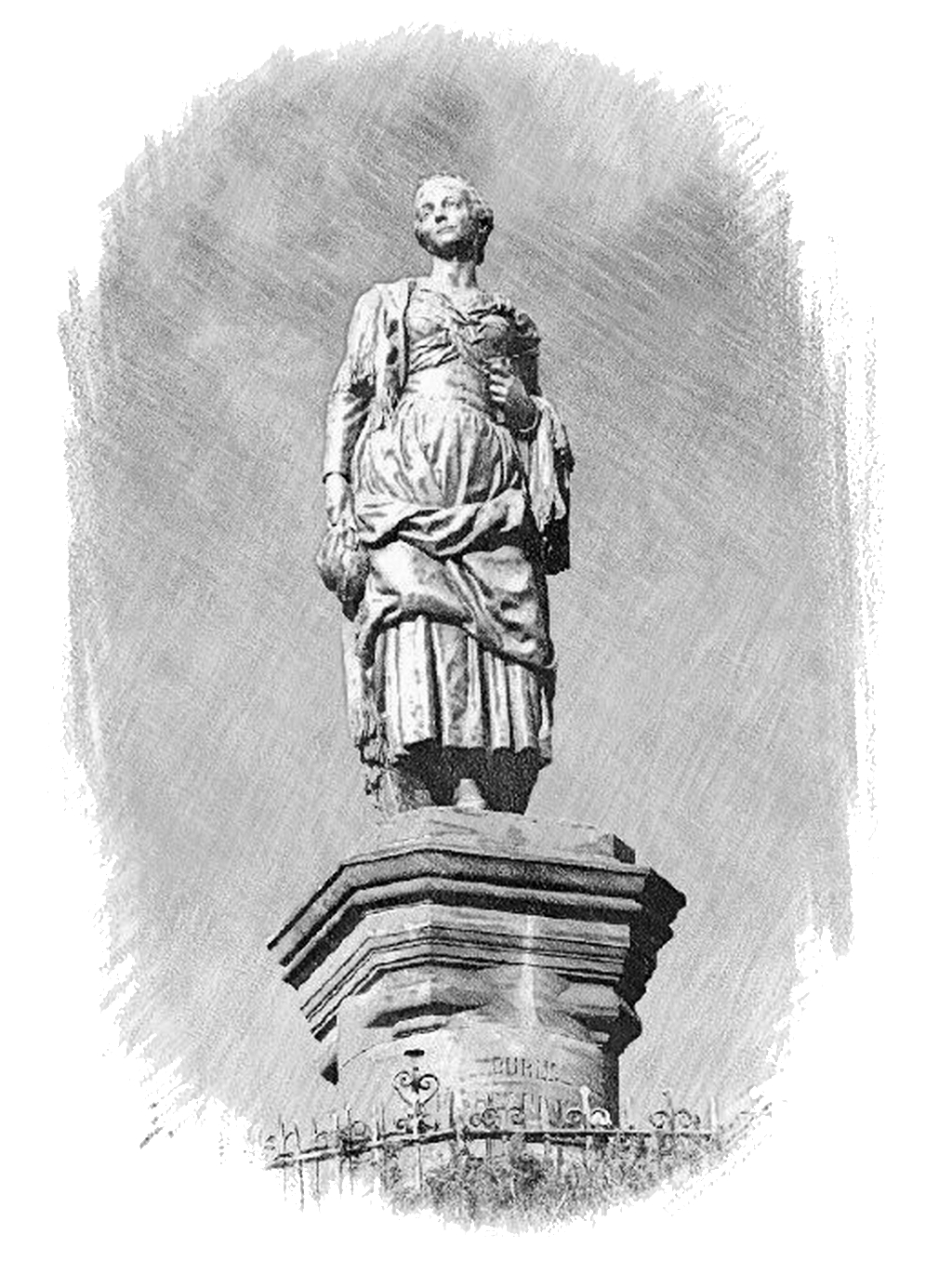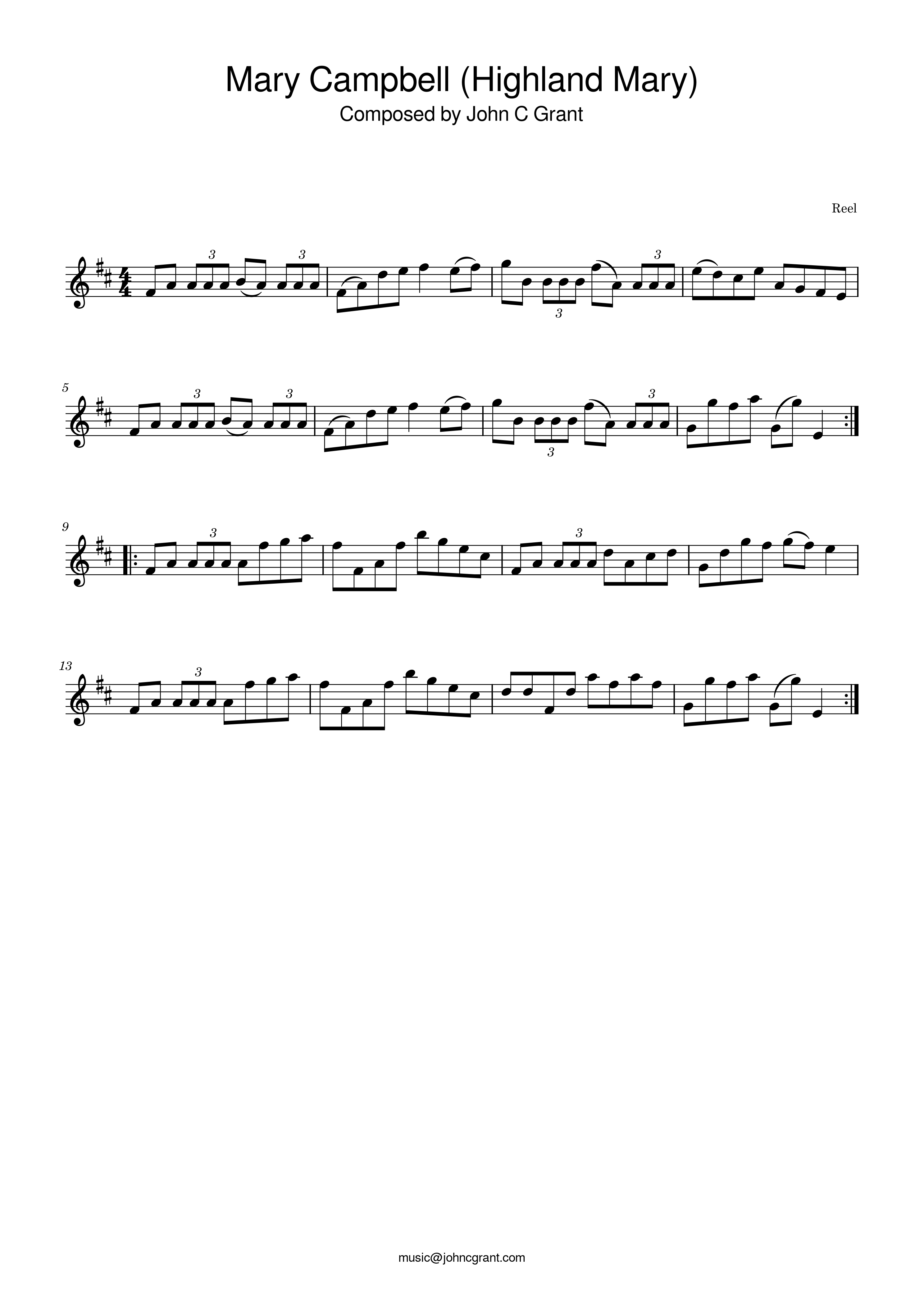
Mary Campbell’s early life unfolded within the vicinity of Dunoon on the Cowal Peninsula, her birthplace. In 1768, her family embarked on a journey that led them to Campbeltown, and eventually, they settled in Greenock. Among her three siblings - Robert, Annie, and Archibald - the latter two were born in Campbeltown.
A chapter of Mary’s life unfolded against the scenic backdrop of Lochranza on Arran, where she resided under the guardianship of Reverend David Campbell, the parish minister and a maternal relation. A vivid description of her personality portrays her as a “sweet, sprightly, blue-eyed creature.”
As her adolescent years unfurled, Mary ventured into Ayrshire, taking up a role as a nursemaid in Gavin Hamilton’s residence in Mauchline. It is whispered that she also toiled as a youthful servant girl in Irvine.
Notably, Mary Campbell’s path intersected with that of Gavin Hamilton’s married daughter, Mrs. Todd. Mrs. Todd’s recollection portrays Mary as “very pleasant and winning,” although she did not necessarily conform to conventional standards of beauty. Subsequently, Mary found herself at Coilsfield House, which later became Montgomery Castle, where her responsibilities encompassed roles such as a dairy-maid or byres-woman. This fortuitous appointment was orchestrated through the efforts of Miss Arbuckle of Campbeltown, who had formed a marital union within the Eglinton family.
Accounts from Grierson, who encountered Mary’s sister Mrs. Anderson in 1817, paint Mary as “tall, fair-haired, with blue eyes.” Further characterizations provided by Miss McNeill depict her as a universally cherished figure, endowed with amiable manners, a gentle temperament, and a ready disposition. Her physical presence was graced by a graceful figure, a delicately fair complexion, and lustrous, bluish eyes that emanated a remarkably captivating allure.
The tragic turn of events befell Mary Campbell at the age of 23, around October 20, 1786. The likely cause of her untimely demise was Typhus, an ailment likely contracted while tending to her ailing brother, Robert. She was interred in the venerable West Kirk churchyard at Greenock, resting in a lair owned by her host and relative, Peter Macpherson.
Legends have circulated, attributing her affliction to the malevolent influence of the evil eye. To counteract this, her father was advised to gather seven smooth stones from a convergence of streams, boil them in milk, and employ the concoction as a remedy. A monument dedicated to her memory was erected in 1842, designed by John Mossman. Interestingly, some local residents believed the monument’s placement to be inaccurate, contending that her remains were laid to rest closer to the kirk. Additionally, a statue of Mary found its home on Dunoon’s Castle Hill.
The indelible mark that Mary Campbell left on history was epitomized by Robert Burns, who first laid eyes upon her in a church near Tarbolton. His verses, “The Highland Lassie O,” “Highland Mary,” and “To Mary in Heaven,” were penned in her honor. These writings alluded to their shared dreams of emigrating to Jamaica. Regrettably, her passing in Greenock abruptly disrupted these aspirations.
According to lore, Robert Burns and Mary Campbell exchanged Bibles across a watercourse, possibly accompanied by traditional Scottish matrimonial vows, in the presence of the River Ayr. Speculation surrounds whether this occurred at Failford, near the convergence of the Water of Coil, or in the vicinity of the Mauchline Burn.
These cherished Bible volumes remained under Mary’s mother’s care. The pages held inscriptions, one invoking “And ye shall not swear by my name falsely—I am the Lord” (Leviticus 16:12) and the other embodying “Thou shalt not forswear thyself, but shalt perform unto the Lord thine oath” (Matthew 5:33). Despite modest circumstances, Mrs. Campbell safeguarded these volumes, passing them to her daughter, Mrs. Anderson, upon her demise in Greenock in 1828. They subsequently fell into the possession of William Anderson, who later journeyed to Canada with them in 1834. Eventually, they found a home at the Brig o’Doon Museum in Scotland, preserved by ardent admirers.
Legend claims that Robert Burns and Mary Campbell shared a tender meeting at “Burn’s Thorn” or “Mary’s Tryst,” a tree-lined path adjacent to Coilsfield House. This poignant location, however, fell victim to relic-hunters over time.
While awaiting employment within the household of Colonel McIvor in Glasgow, Mary Campbell found refuge with relatives in Greenock. The shadow of her impending departure was tinged with sadness, as recounted by Robert Burns’s sister, Isabella Burns. He is said to have expressed a poignant moment of disappointment, sharing with John Blane, the “gaudman,” that Mary had declined a rendezvous at the ancient castle tower in Mauchline.
Further sorrow befell Burns upon receiving a letter at Mossgiel, likely conveying the news of Mary Campbell’s demise. In the years that followed, Burns held her memory dear, penning the poignant poem “To Mary in Heaven” at Ellisland Farm on the third anniversary of her passing. This touching expression was a product of deep contemplation, as Burns wandered along the banks of the River Nith, his heart heavy with emotion.
A guide track for ‘Mary Campbell’ is available below for listening: -
You can download a PDF of the sheet music here
- or braille format here.
The track is additionally available within the following collections and sets: -
Associated Collections: -
4/4
Not Yet Recorded
Reel
Robert Burns
The Tarbolton Collection
The Three Six Five Collection

